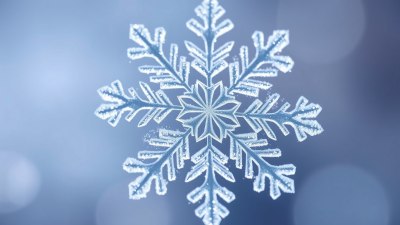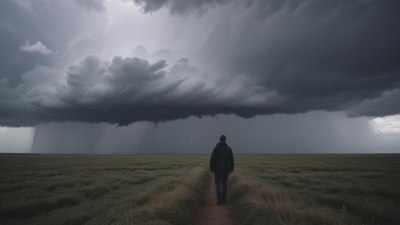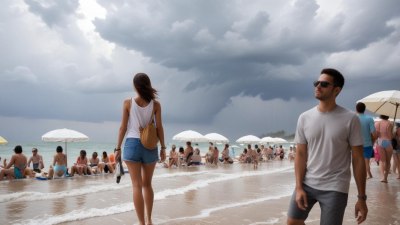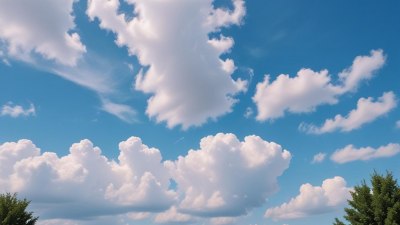Why Some Storms Rotate Counterclockwise
Explore the science behind the counterclockwise rotation of storms and its implications for weather patterns.
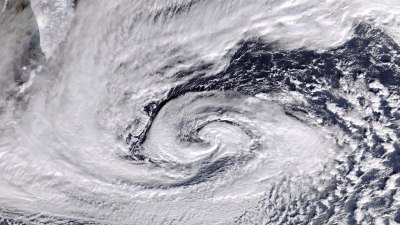
Image by The Yuri Arcurs Collection on Freepik
Understanding the behavior of storms is crucial for meteorology and public safety. One fascinating aspect of storm dynamics is the rotation direction of cyclonic systems. In the Northern Hemisphere, many storms, particularly hurricanes and tornadoes, rotate counterclockwise. This phenomenon can be attributed to several fundamental principles of physics and atmospheric science.
The Coriolis Effect
At the heart of storm rotation is the Coriolis effect, a result of Earth's rotation. As the Earth spins, it causes moving air masses to deviate from a straight path. In the Northern Hemisphere, air moving toward the low pressure at the center of a storm is deflected to the right, leading to the characteristic counterclockwise rotation.
Pressure Systems
Storms are essentially low-pressure systems. The air rushes in towards the center of low-pressure zones. Due to the Coriolis effect, this inward flow is turned to create a counterclockwise rotation. Conversely, high-pressure systems exhibit a clockwise rotation in the Northern Hemisphere. Understanding this behavior is crucial for predicting storm paths and intensities.
Temperature and Humidity Gradients
Temperature differences across regions can significantly impact storm formation and rotation. Warm, moist air is less dense than cooler, dry air. When these two contrasting air masses meet, the warm air rises, creating areas of low pressure. The resultant updrafts contribute to the spin of a storm system. Seasonal changes in temperature gradients often lead to more intense storm formation.
Role of Wind Shear
Wind shear refers to the change in wind speed and direction with altitude. Varying wind shear can influence the rotation of storms. For instance, low wind shear allows storms to build vertically, maintaining their structure and facilitating counterclockwise rotation. In contrast, high wind shear can disrupt a storm's organization, leading to weaker rotations or diminished storms.
The Life Cycle of Storms
Storms go through various phases, including formation, maturation, and dissipation. During the development stage, sufficient warm air and moisture are essential to establish a counterclockwise rotation. As the storm matures, the low-pressure center deepens, enhancing the rotation speed. Understanding these stages helps meteorologists predict storm behavior and potential impacts.
Impact of Geography
Geographical features, such as mountain ranges and bodies of water, can modify storm behavior. For instance, mountains can force air masses to rise, promoting storm formation and helping to establish rotation. Similarly, large bodies of warm water provide the necessary energy to power storms, leading to intense low-pressure systems that exhibit counterclockwise rotation.
The Southern Hemisphere Differences
While many storms in the Northern Hemisphere rotate counterclockwise, the Southern Hemisphere shows the opposite pattern, with storms rotating clockwise. This difference is again due to the Coriolis effect, which operates in a reverse manner, demonstrating how Earth's rotation influences atmospheric dynamics across latitudes.
Understanding Fronts and Their Role
Weather fronts, which are boundaries between two air masses with different temperatures and humidity levels, also play a significant role in storm development and rotation. Cold fronts moving into warm air can trigger the lift necessary for counterclockwise rotating storms to form. Recognizing different front types—cold, warm, occluded—helps meteorologists assess storm intensity and potential hazards.
Impact of Climate Change
As climate change alters global temperatures and precipitation patterns, storm behavior may also shift. Warmer temperatures can lead to more intense storms and could amplify their counterclockwise rotation, making understanding these dynamics even more critical. Meteorological studies increasingly focus on how climate change will affect storm frequency and strength.
In summary, the counterclockwise rotation of storms in the Northern Hemisphere stems from the interplay of several atmospheric and physical factors, with the Coriolis effect being a primary driver. As we continue to study and monitor storm patterns, integrating knowledge about these dynamics remains vital for predicting the impacts of severe weather and protecting communities at risk.

